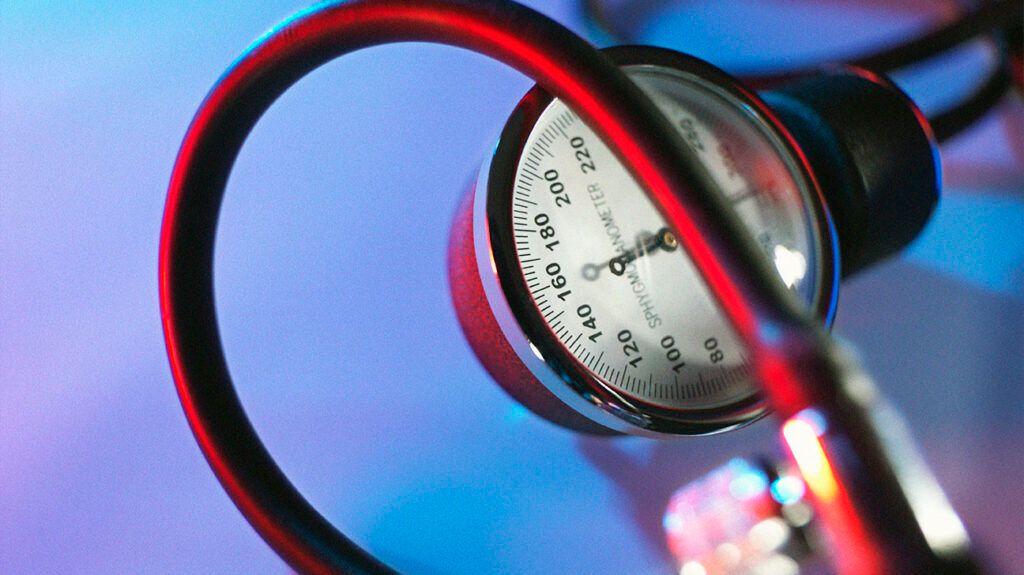A person can have high cholesterol and low blood pressure at the same time due to certain medications, underlying health conditions, or lifestyle factors, including diet.
Blood cholesterol and blood pressure are two different but important factors in reducing a person’s risk of heart disease and stroke.
Cholesterol is a waxy substance that moves around the body in the blood. Certain types of cholesterol cling to the artery walls, and these include low-density lipoprotein (LDL) cholesterol and triglycerides. Other types, such as high-density lipoprotein, take cholesterol to the liver, where it breaks down, helping manage cholesterol levels.
Blood pressure refers to the force of the blood pushing against blood vessel walls as it moves around the body. Factors such as how narrow or blocked the arteries are can lead to changes in blood pressure. This has links to increased LDL cholesterol, but it is ultimately a separate measurement of health and cardiovascular disease risk.
This article explains how some people can have high cholesterol and low blood pressure at the same time.

Cholesterol levels and blood pressure are different mechanisms in the body. However, they both relate to cardiovascular disease risk, which indicates someone’s likelihood of developing heart disease or stroke.
High cholesterol for a long period can lead to fatty deposits building up on the walls of major arteries. This causes atherosclerosis, a condition that stiffens the artery walls.
High blood pressure can
A
In some people, high cholesterol may occur at the same time as low blood pressure. Even though those with high cholesterol may have an increased risk of high blood pressure, they are separate processes that different factors may affect.
Low blood pressure might occur for several reasons,
- prolonged bed rest
- depression
- Parkinson’s disease
- the first 24 weeks of pregnancy
- decreases in blood volume due to trauma or internal bleeding
- dehydration
- side effects of certain medications, including:
- the effects of alcohol
- heart problems, including:
- problems with the hormones and glands, including:
- severe infection
- allergic reaction
- syncope or fainting
- low levels of vitamin B12 and folic acid
On the other hand, high cholesterol can pass from parents to children in the genes. It can also develop due to lifestyle factors, such as:
- a diet high in fatty foods
- low levels of daily exercise
- having overweight or obesity
- smoking
- drinking excessive amounts of alcohol
Medication side effects
Some medications to treat one of these conditions may cause the other.
For example, people may take a diuretic medication called hydrochlorothiazide to treat high blood pressure. This may cause low blood pressure as an adverse effect. However, according to
During this spike, a person may experience low blood pressure and high cholesterol at the same time.
Underlying health conditions
Several health conditions increase a person’s risk of having high cholesterol and low blood pressure simultaneously.
Hypothyroidism occurs when the thyroid gland does not produce enough thyroid hormone. This can affect how the body
Adrenal insufficiency occurs when the adrenal glands do not produce enough adrenaline. This may cause
Lifestyle factors
Different lifestyle factors can cause high cholesterol but low blood pressure. For example, people with a severe or rapid drop in blood sodium due to drinking too much water might experience low blood pressure. However, if the same person eats a high fat diet, they
Several lifestyle factors can reduce both blood pressure and cholesterol levels. These include:
- maintaining a moderate weight
- exercising regularly
- quitting or avoiding smoking, if applicable
- reducing alcohol intake
People can reduce cholesterol levels by eating less food containing saturated fat. Cutting down on caffeine and salt content in foods might also help a person’s blood pressure.
Those who receive a diagnosis of high blood pressure or high cholesterol might receive medications to control either.
The following are answers to some questions people frequently ask about high cholesterol.
Can a person have high cholesterol and still be healthy?
People need cholesterol to live. High levels of LDL cholesterol
What are the five signs of high cholesterol?
High cholesterol does not usually cause symptoms. Regular cholesterol tests are important for monitoring cholesterol levels and identifying an increased risk of heart attack and stroke.
People can have high cholesterol and low blood pressure at the same time. They are separate mechanisms that often relate to one another but can change independently.
Certain underlying conditions, medication side effects, and lifestyle factors can mean that a person has high cholesterol but low blood pressure.
For people who have high cholesterol, blood pressure changes, or both, managing cholesterol levels and blood pressure is vital for reducing the risk of heart disease. This is possible through exercise, diet, smoking cessation, or prescribed medications.
